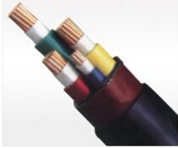Send Time:2019-4-15
List of standard diameter of national standard of wire and cable National standard What is the diameter of national standard
Source: Cable recruitment network
How to distinguish whether the national standard diameter of wire and cable is standard? What are the standard wire specifications? Is there a standard? Below we come together to understand the standard diameter of the cable standard, hope to help you!
Knowledge of the square number of wires and diameter conversion methods
The specifications of the wires are commonly used internationally with three standards: the US(AWG), the British(SWG), and our(CWG).
A few squares is a nominal value specified by the national standard. A few squares is the user's choice of wire and cable based on the load of wire and cable.
The number of square wires is an oral term used in the renovation of hydropower construction. It is often said that a few square wires are not added, that is, Square millimeters.
The square of the wire is actually marked with the cross-sectional area of the wire, that is, the area of the circular cross section of the wire, in square millimeters.
In general, the experience load is when the grid voltage is 220V, and the experience load per square wire is about 1,000 watts.
Each square of the copper wire can carry 1-1 .5 kilowatts of electricity, and each square of the aluminum wire can carry 0.6-1 kilowatts of electricity. Therefore, an electric appliance with a power of 1 kilowatt only needs to use a square of copper wire.
Standards and standards for national standard wires
Specifically to the current, when the short distance is transmitted, the copper wire can carry 3A to 5A of current per square. The heat dissipation condition is 5A / square mm, not enough to take 3A / square mm.
Conversion method:
Knowing the square of the wire, calculating the radius of the wire is calculated using the formula for finding the circular area:
Square of wires(Square mm) = square of Pi(3.14) × radius of wires(mm)
Knowing the square of the wire, the same is true for calculating the diameter of the wire, such as:
The line diameter of the 2.5 square wire is: 2.5 <S> 3.14 = 0.8, and then the square is 0.9 mm, so the line diameter of the 2.5 square line is: 2 × 0.9 mm = 1.8 mm.
Knowing the diameter of the wire, the square of the wire is also calculated using the formula for finding the circular area:
Square of wire = Pi(3.14) × square / 4 of line diameter
The cable size is also squared, and multiple wires are the sum of the cross-sectional areas of each wire.
Formula for calculating the cut area of cable:
Square X number of shares of 0.7854 × wire radius(mm)
Such as 48 shares(wire radius 0.2 mm per share) 1.5 square lines:
0.785 ×(0.2 × 0.2) × 48 = 1.5 square
Knowledge of commonly used small specifications cable
RVVP: Copper core PVC insulated shielded PVC sheath soft cable, voltage 300V/300V2-24 core. Main quality indicators: wire diameter(including core wire and braided wire, not as thick as possible, thick with impurity copper to meet resistance standards), copper core purity, braiding density, and pitch. Purpose: instrument, instrument, intercom, monitoring, control installation.
RG: Physical foaming polyethylene insulated access network cables are used to transmit data analog signals in coaxial fiber hybrid networks(HFCs). This is the United States standard and is approximately equivalent to the national standard SYWV series. Main quality indicators: copper core diameter, insulation thickness, knitting materials(mostly aluminum magnesium wire knitting on the market, good quality should be tin copper plating), weaving density.
UTP: LAN cable use: transmission telephone, computer data, fire prevention, security system, smart building information network. Commonly used UTP CAT 5, UTP CAT 5E with shielding model STP
KVVP: Polyvinyl chloride sheath braided shield cable use: signal transmission, control, measurement SYWV(Y), SYKV cable television, broadband network special cable structure:(coaxial cable) single anaerobic round copper wire physical foaming polyethylene(insulation) )(Duxisi) PVC(polyethylene),(equivalent to American Standard RG-6, RG-59). Now the market is mostly woven with aluminum magnesium wire(can not be welded, easy to oxidize), core wire with copper aluminum, copper steel, so many people think that SYWV line is cheaper than SYV line, but in fact it is not so.
RVV(227 IEC52/53) PVC insulated soft cables(cross-sectional area: 0.5-6 .0 number of core lines 1-24) Uses: power lines, signal lines, household appliances, small electric tools, instrumentation and power lighting. As long as this specification line meets the national standard, the prices are not much different, but there is no shortage of useful impurities in the market, insufficient line diameter, short meters, direct discharge(core wire copper wire does not twist or core wire does not twist, so the tensile ability is greatly reduced, The resistance increases) to fill the situation. Derivative model: RV VS: This type of core pitch encryption, generally used for broadcast systems.
Use of soft cables(cross-sectional area: 0.12-0 .5 core wire number 1-24) for AVVR PVC sheath installation: signal, control. Such as access control signals, control, cloud control and so on.
HYV, HYA data communication cables(indoor and external)(core diameter 0.5 mm, core number 2, 4, 8, etc.) are telephone lines, used for telephone communications and radio equipment connections, and telephone distribution networks. Line box wiring, etc.. The diameter of the general core line on the market is 0.4 mm, and there are also almost steel wires or copper aluminum alloys. In addition, the number of telephone lines is generally insufficient.
RV, RVP PVC insulated cables, PVC shielded cables, mainly used for equipment.
RVS and RVB are suitable for electrical appliances, small power tools, instruments, instruments, and power lighting connection cables. RVS can also be used for broadcast lines or instead of RVV lines. RVB can replace the gold and silver line if the requirements are not high.
BV, BVR PVC insulated cable use: suitable for electrical instrument equipment and power lighting fixed wiring, affordable low resistance. In many situations where the power supply is connected, you can consider more.
The model of some audio lines of the RIB speakers(fever line, gold and silver line) is often marked with the words "6N" and "7N". The meaning is to indicate the purity of the fever line made of metal material. For example, "99.9999 %" can be represented by "6N", which means that its purity is 6 9, and the greater the number in front of N, the higher the purity of the sound line. Whether the sound equipment of home theater needs to use the sound line of higher quality, the key is to master the principle of seeking truth from facts and according to the power.
For generally popular(less than 10,000 yuan) audio equipment, there is no need to deliberately pursue the high quality of wire, as long as the use of a copper core signal line with a large section can be used. For better home theater audio equipment, consider using high-quality audio lines.
III. BVR
The BVR wire is a copper-core PVC insulated soft wire, which is used in situations where it is required to be soft when fixed wiring. The BVR wire is a special soft wire for the distribution cabinet, also called a secondary line. B refers to the classification of cloth wires, V refers to PVC polyvinyl chloride, commonly known as "plastic", R refers to the meaning of soft, that is, increase the number of conductor roots.
Suitable for fixed laying of power plant with AC rated voltage 450/750V and below. Like home lighting. Fixed wiring can be used for indoor application, tube piercing and other occasions. In order to facilitate the difference in the installation process, it can be divided into seven colors: red, yellow, blue, green, black, white and double. Since BVR is soft, the scope of application is also mostly in soft environments. The only difference between BVR wires and BV wires is that the R-type wire conductor wire diameter is soft copper wire. That is: increase the number of conductor roots, reduce the diameter of a single conductor, the diameter of a single conductor is less than 1 mm. In this way, the BVR wire is very soft, and the laying angle is greatly reduced compared to the BV wire. It is more convenient, faster, and reduces the working strength while greatly improving the working efficiency. The majority of electricians and building decorators like!
Fourth, the difference between BV and BVR:
(1) In terms of production process, BV is single-core and BVR is multi-core. In production, BVR is a little more complicated than BV.
(2) In terms of price, BVR is more expensive than BV. In the international electrician committee, the scope of BVR is from 2.5 mm to 70mm, but according to the actual needs of China, it is the same as BV.
(3) In terms of performance, BV and BVR are basically the same, and BVR is slightly heavier in weight; Similarly, BVR wires are based on selected materials
欢迎咨询
我们会尽快联系您
